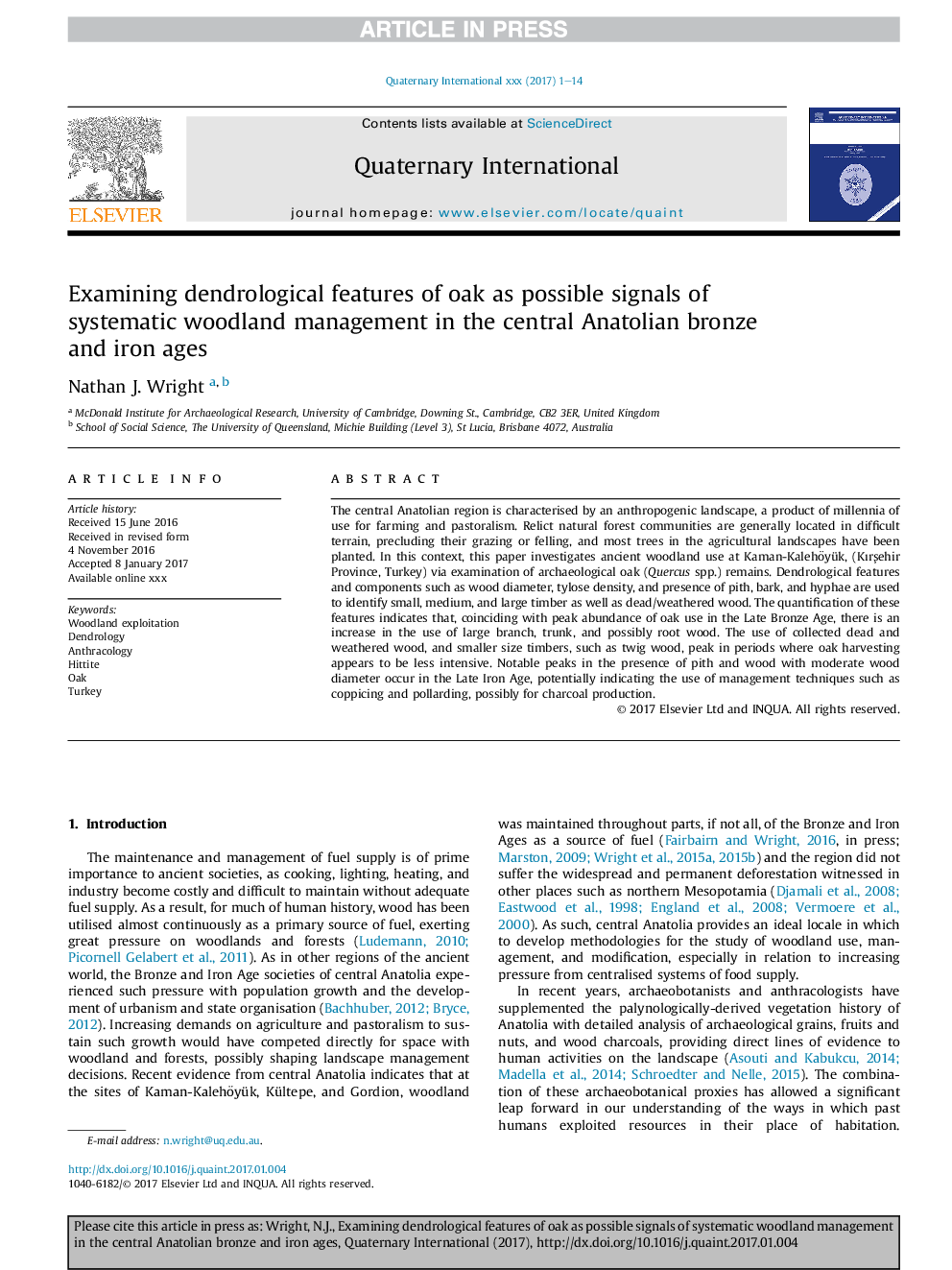| کد مقاله | کد نشریه | سال انتشار | مقاله انگلیسی | نسخه تمام متن |
|---|---|---|---|---|
| 7451006 | 1484059 | 2018 | 14 صفحه PDF | دانلود رایگان |
عنوان انگلیسی مقاله ISI
Examining dendrological features of oak as possible signals of systematic woodland management in the central Anatolian bronze and iron ages
ترجمه فارسی عنوان
بررسی ویژگی های دندرولوژی بلوط به عنوان سیگنال های ممکن برای مدیریت سیستماتیک جنگل در دوره های برنزی و آهن آناتولی مرکزی
دانلود مقاله + سفارش ترجمه
دانلود مقاله ISI انگلیسی
رایگان برای ایرانیان
کلمات کلیدی
سوء استفاده از جنگل، دندرولوژی، انتگرال شناسی، هیتیت، بلوط، بوقلمون،
موضوعات مرتبط
مهندسی و علوم پایه
علوم زمین و سیارات
زمین شناسی
چکیده انگلیسی
The central Anatolian region is characterised by an anthropogenic landscape, a product of millennia of use for farming and pastoralism. Relict natural forest communities are generally located in difficult terrain, precluding their grazing or felling, and most trees in the agricultural landscapes have been planted. In this context, this paper investigates ancient woodland use at Kaman-Kalehöyük, (KırÅehir Province, Turkey) via examination of archaeological oak (Quercus spp.) remains. Dendrological features and components such as wood diameter, tylose density, and presence of pith, bark, and hyphae are used to identify small, medium, and large timber as well as dead/weathered wood. The quantification of these features indicates that, coinciding with peak abundance of oak use in the Late Bronze Age, there is an increase in the use of large branch, trunk, and possibly root wood. The use of collected dead and weathered wood, and smaller size timbers, such as twig wood, peak in periods where oak harvesting appears to be less intensive. Notable peaks in the presence of pith and wood with moderate wood diameter occur in the Late Iron Age, potentially indicating the use of management techniques such as coppicing and pollarding, possibly for charcoal production.
ناشر
Database: Elsevier - ScienceDirect (ساینس دایرکت)
Journal: Quaternary International - Volume 463, Part B, 10 January 2018, Pages 298-311
Journal: Quaternary International - Volume 463, Part B, 10 January 2018, Pages 298-311
نویسندگان
Nathan J. Wright,
